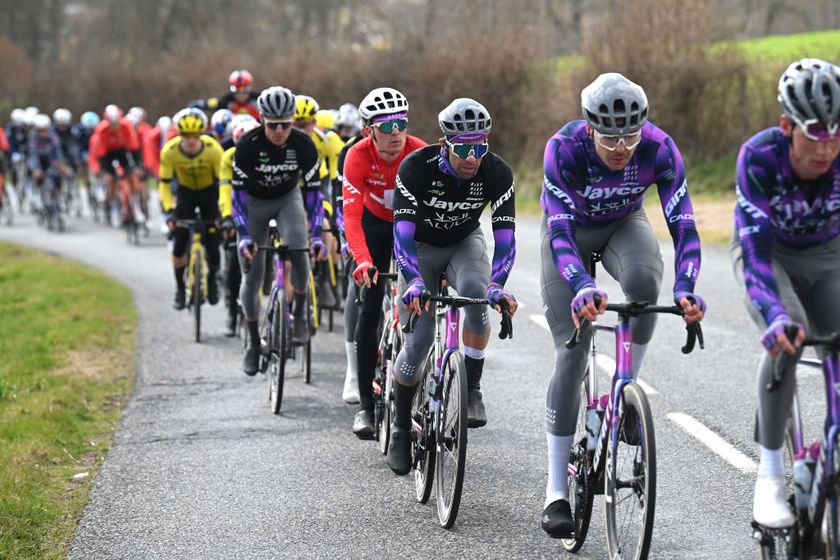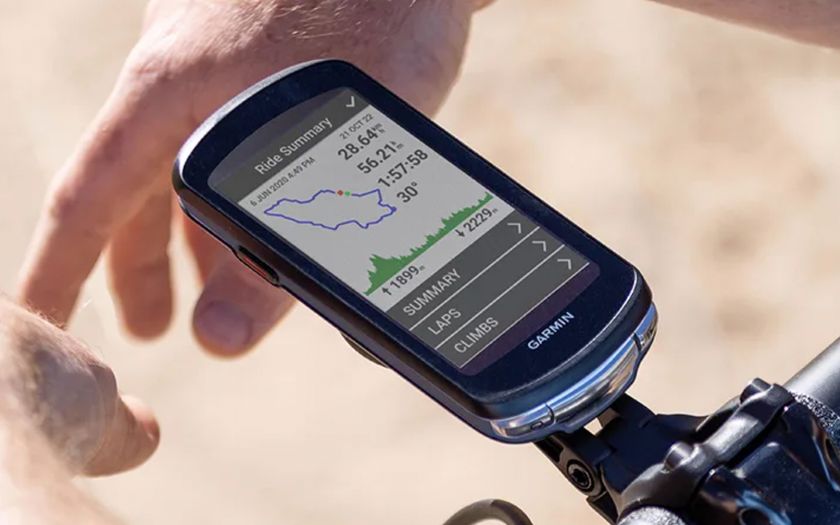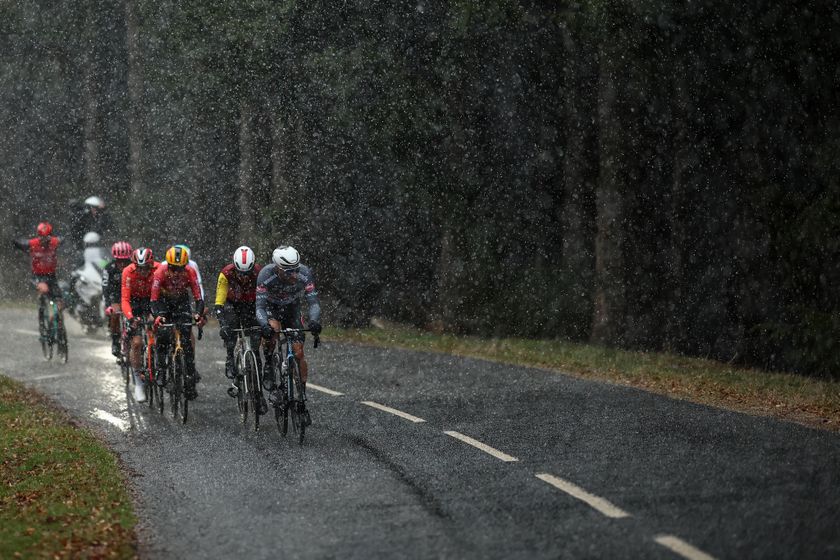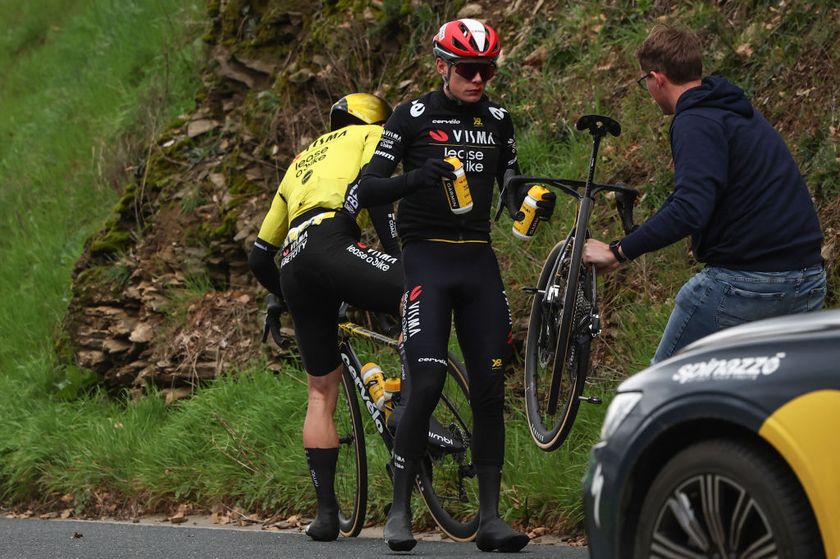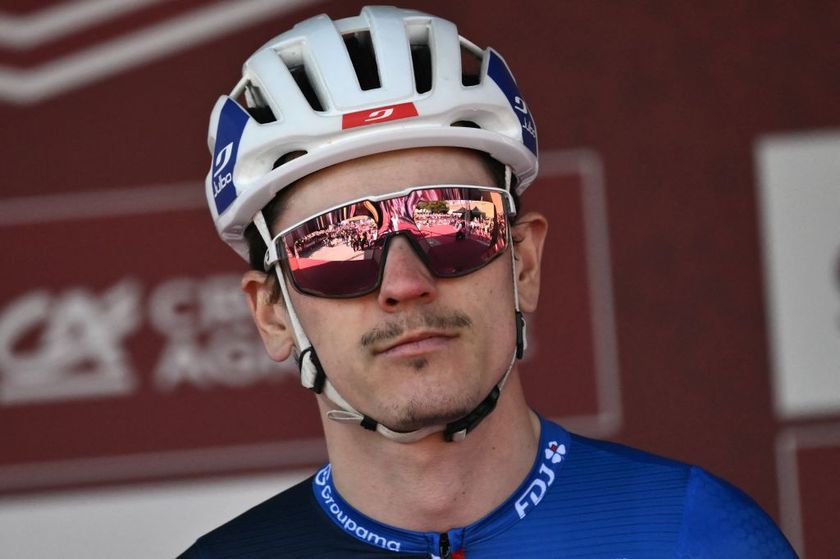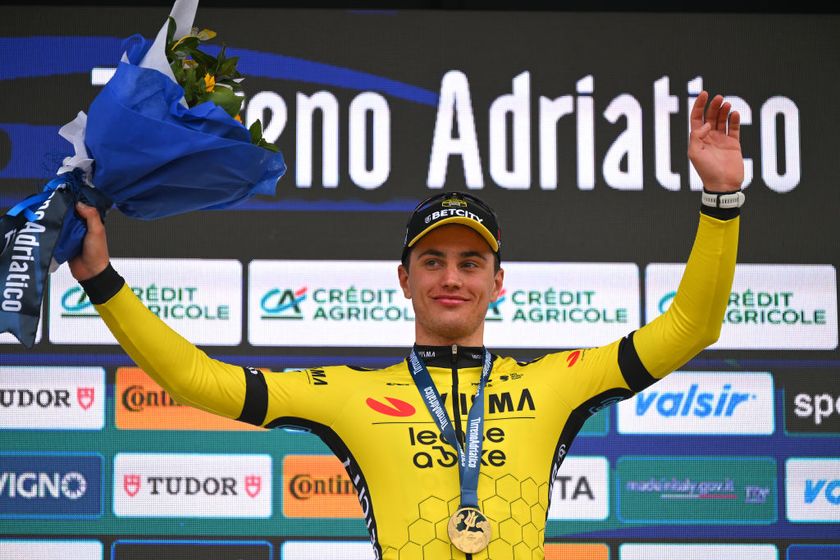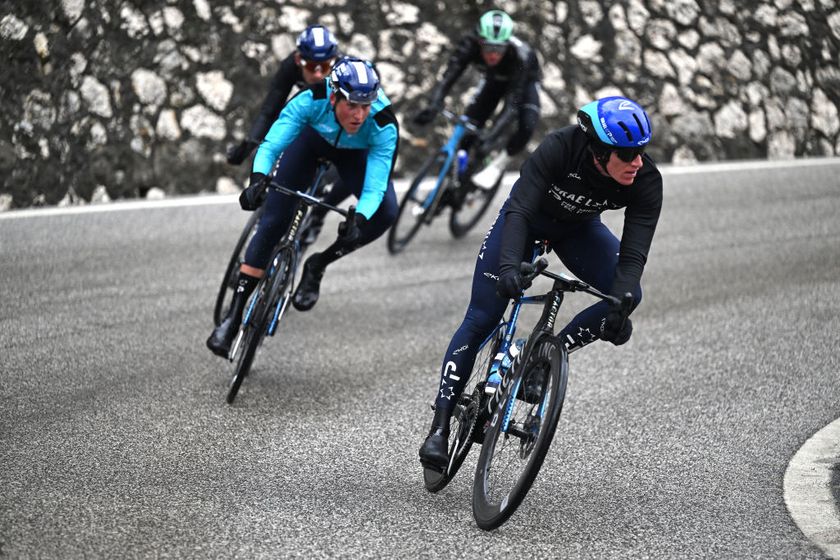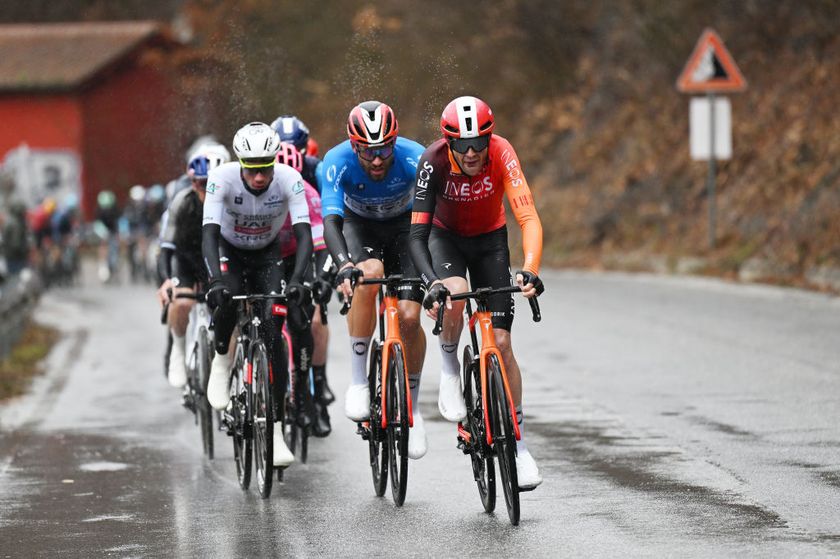New indoor cycling app launched by former Chairman of the Zwift Esports Commission
Built with a focus on e-racing, with crosswinds, cornering and tyre grip considerations as well as inbuilt streaming and dual-recording, indieVelo has Olympic-sized aspirations

A new racing-focused indoor cycling platform has joined the growing virtual cycling landscape with the announcement of its beta launch this week. IndieVelo, a platform that will focus primarily on competitive e-racing, was born from a single thought: Imagine if online cycling was an Olympic sport.
It uses simplistic graphics, instead prioritising bunch racing dynamics with the additional complexity of crosswinds and tyre grip consideration, as well as integrated anti-cheating mechanisms and even live-streaming capability. Its aim is to be the best indoor cycling app for e-sports enthusiasts and competitive racers, rather than necessarily aiming for mass participation appeal.
"We have a once-in-a-lifetime opportunity to define the future of a sport, starting from a blank sheet of paper," declares indieVelo founder Dr. George Gilbert. "Developers designed all the existing platforms for casual riding, not competitive events, so don't fully cater to what elite athletes want and need."
It is available for beta download at indievelo.com and is currently free to use with the option to support development with a $12.99 monthly or $129.99 annual membership.
Background
The Cambridge-educated Gilbert wrote the code for the global telephone network infrastructure handling emergency calls worldwide. He is a UCI-trained commissaire and former Vice-Chairman of the Board of Directors at British Cycling.
With his role as the Chief Commissaire at various UCI Cycling Esports World Championships and his past position as the Chairman of the Zwift Cycling Esports Commission, Gilbert believes he possesses a beneficial viewpoint on athletes' desires and the means to accomplish them. To complement this, he conducted interviews with numerous elite-level athletes, including Matt Gardiner, to ascertain the specific requirements and genuine aspirations of racers.
Gardiner, a member of the Saris-NoPinz esports team, said about indieVelo, "As an early adopter in the discipline of esports and a power-user of Zwift, I never thought I’d be open to change. IndieVelo’s commitment to performance verification and authentic achievement, draft dynamics, and community-driven spirit won me over instantly. The game offers many tools not available in other games for race organizers already in Beta, and has so much potential for the future of esports."
Get The Leadout Newsletter
The latest race content, interviews, features, reviews and expert buying guides, direct to your inbox!
Key pillars and foundations
The feedback formed the foundation of indieVelo and guided its two key pillars: tactics and credibility. Skill, not just your power, should dictate results as a racer. This has been a long-standing complaint of racers on other platforms and formed Gilbert's initial concept.
With that decided, Gilbert looked to the Unity Gaming Engine, the cross-platform game development software created by Unity Technologies, as his blank slate. Unlike other platforms that use proprietary software engines, Unity enables simple code that can be updated quickly with new functions and features and allows Gilbert to call on a global gaming workforce trained in the ubiquitous cross-platform engine.
IndieVelo's server-side architecture means everyone sees the same thing on their screen, and all race results are reflective of what each rider sees. This solves the problem occasionally experienced by Zwift racers, in which a rider can cross the finish line first only to be demoted after the fact, because the client-side model leads to each rider seeing a marginally different version of the game to their peers. Like with Wahoo RGT, what you see on indieVelo is what everyone else sees.
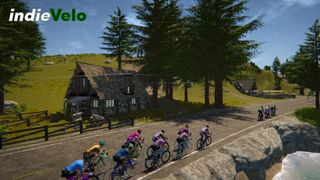
Physics and avatar interaction
With those central aspects in place, Gilbert next focused on innovating the technology of cycling physics, creating a proprietary RPTR Engine (Ride, Pace, Train, Race). The engine is grounded in the principles of physics, ensuring that riders must abide by the fundamental laws of nature. Riders cannot exist simultaneously in the same space, meaning positioning within a group of riders is an essential element for success. Artificial Intelligence algorithms are employed for this, automatically finding gaps in the peloton, seeking out the draft from other riders, and forming echelons to protect from the wind. As a result, there is no current need for the distraction and hardware limitations of manual steering.
Wind will play a significant role in indieVelo's racing dynamics. It's an element that racers must consider when approaching each race and making tactical decisions in real-time. The wind speed changes, gusts, and crosswinds cause the formation of echelons that all give prime tactical opportunities.
IndieVelo's physics engine accounts for cornering speed and tyre grip too. Like in Wahoo RGT, if you dive into a corner too quickly, you'll be auto-braked until you reduce power before reaccelerating, making mastering the art of cornering essential.
IndieVelo doesn't display the power-to-weight ratio (w/kg) of other riders. Interestingly, despite acknowledging that a rider's weight is a crucial speed-determining factor, Gilbert sees no benefit to sharing the data publicly and believes it is detrimental to an individual's health and well-being and the sport's growth.
Instead, it shares data that mirrors real-world racing; the speed of other riders and their relative physical effort compared to you. IndieVelo displays the speed of every racer on the rider list and visualisation of effort as a percentage of a rider's Critical Power.
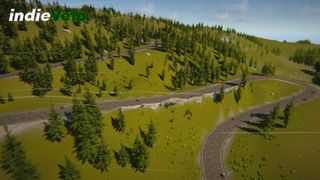
Rankings and anti-cheating
IndieVelo utilises an Elo-like rating system, which ensures placement with riders of similar abilities for a high-quality race experience. If you outperform riders with a higher rating than yours, your rating goes up. Conversely, if you lose to riders with a lower rating, your rating goes down, and your ranking is affected if you enter a race but don't finish.
IndieVelo says credibility is a fundamental aspect of its philosophy, placing significant emphasis on authentic athletic performance that aligns with the standards of elite-level sports. To ensure that every rider’s performance is verified, indieVelo has a fully integrated suite of anti-cheat mechanisms, including built-in dual-recording, allowing a rider to transmit power data from two sources at once.
Gilbert worked with the former Zwift Accuracy and Data Analysis team (ZADA) leader, Bjoern Ossenbrink, and the rest of the former ZADA team to create indieVelo's performance verification service. Gilbert points to their years of partnership in ZADA pioneering the detection of cheating in physical esports to drive innovations and the belief that algorithms can only go so far.
"Just as with online security," he explains, "it’s not a question of building something once and then calling it done, the landscape is constantly changing and evolving, and you need great people to be able to keep ahead."
Racing
Racing is at the heart of indieVelo, and a repeating roster of events begins every five minutes. The platform currently supports Time Trials, Scratch Races, Points Races, and Elimination Race formats, and claims it will regularly develop additional variations and functionality. In addition, indieVelo has a built-in user interface for customised event creation, as well as the ability to stream individually configured broadcasts.
One thing you won't find on indieVelo is any gamification. There are no Power-Ups or other gaming enhancements, and Gilbert doesn't see a time when there will be, quipping, "This isn't Mario Kart with turtle shells and banana skins."
The bottom line
According to claims, racers are being drawn to indieVelo at a rate of one user per minute since the beta launch.
If it is to succeed, indieVelo will need to overcome a lot of more established competition. Wahoo RGT, for example, has many of the same features, including auto-braking, and pack dynamics considered by some racers to be the best in the business for racing, as well as steering and the recently integrated Systm workouts; MyWhoosh shares an esports focus and offers racers significant cash incentives; and of course, Zwift, which balances mass-participation with esports focus well, drawing in enormous crowds.
IndieVelo will never be able to compete on a marketing and promotional level with juggernaut Zwift, and some will be turned away, unable to get past the no-frills look and simple graphics. It will likely also never compete with Zwift for users whose preference is social interaction. A vast user base and vibrant community are the special sauce of leading platforms like Zwift.
However, that doesn't deter Gilbert, stating, "indieVelo is, above all else, a community of people who share a vision of what online cycling and esports could be. We don’t have a community—it is a community!"
That community's feedback will drive indieVelo's roadmap, and the reviews we've seen so far have been positive.
The Olympic dream
“IndieVelo, the UCI, and many others all share the common aim of getting cycling esports to the Olympics," states Gilbert. "Achieving that will require much hard work from many people working together and focussing on their different areas of expertise.
"Ossenbrink, and the rest of the former ZADA team, in consultation with the UCI and Zwift, have moved to indieVelo as an independent company to help provide that governance and oversight. In particular, indieVelo doesn’t see itself as a competitor to Zwift or any other platform but as complementary to them. A symbiotic relationship where our independent expertise in technology, cycling dynamics, and performance verification ensures that online racing, wherever it takes place, is credible and together we achieve that Olympic dream.”
A physical therapist with over 25 years of experience, Christopher Schwenker is on a journey to give back to the cycling community for rewarding experiences and fulfilling relationships through the pages of his virtual cycling blog, The Zommunique’, and his cycling-related non-profit, The DIRT Dad Fund.
